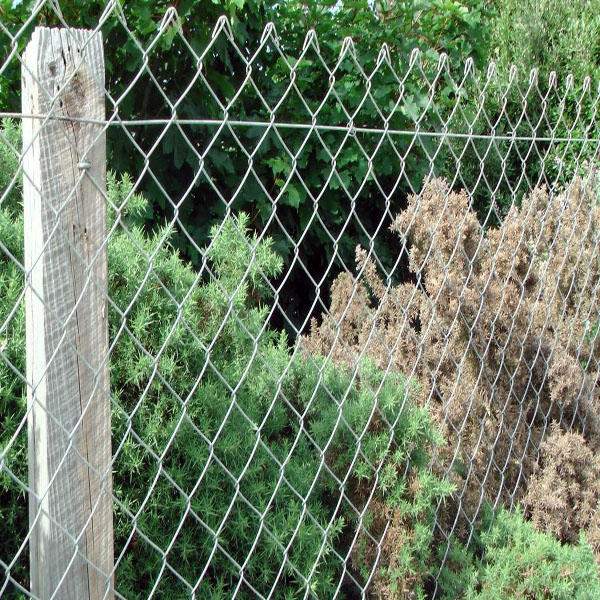Nov . 30, 2024 18:00 Back to list
Wholesale Welded Wire Fabric for Concrete Applications and Construction Needs
Understanding Wholesale Welded Wire Fabric in Concrete Applications
In construction and civil engineering, the integrity and strength of concrete structures are paramount. One of the key components that enhance the structural integrity of concrete is welded wire fabric (WWF). This article delves into the essential aspects of wholesale welded wire fabric, exploring its production, applications, and advantages in concrete work.
What is Welded Wire Fabric?
Welded wire fabric, often simply referred to as wire mesh, is a collection of wire strands that are welded together at their intersections to create a robust grid. It is used extensively in concrete construction to reinforce slabs, walls, and various structural elements. The standard configuration includes square or rectangular openings, which allow for even distribution of loads and tension across the surface of the concrete.
Types of Welded Wire Fabric
Welded wire fabric comes in various types, which are categorized based on factors such as wire diameter, mesh size, and the material used. Commonly, this fabric is made from carbon steel and is often coated with materials like epoxy to enhance corrosion resistance. The wire gauges and mesh spacing can differ, often specified by the demands of the concrete application.
1. Standard Wire Fabric Commonly used in floors and foundations, this type features a typical grid pattern and wire gauge conducive to general construction needs. 2. Heavy-Duty Wire Fabric Designed for thick concrete applications, heavy-duty options are available to support significant loads, especially in industrial settings. 3. Specialty Mesh Custom-designed welded wire fabric can be created for specific applications, such as architectural features or specialized structural elements.
Benefits of Using Welded Wire Fabric in Concrete
wholesale welded wire fabric concrete

1. Enhanced Strength The integral design of welded wire fabric helps to distribute loads evenly throughout the concrete slab, significantly improving its tensile strength and resistance to cracking. 2. Cost-Effectiveness Purchasing wholesale welded wire fabric can lead to significant cost savings for contractors and builders, as bulk purchases often come with competitive pricing. This aspect ensures that resources are allocated efficiently. 3. Speed of Installation Compared to traditional reinforcement methods like rebar, welded wire fabric can be easier and faster to install, reducing labor costs and time on the job site. 4. Improved Durability When incorporated properly into the concrete mix, WWF enhances the long-term durability of the structure, effectively resisting environmental stresses, temperature fluctuations, and other factors that can lead to degradation over time.
Wholesale Purchasing Considerations
When sourcing welded wire fabric wholesale, several factors should be taken into account
- Quality Standards Ensure that the materials meet industry standards and regulations to guarantee strength and reliability. - Supplier Reputation Select a reputable supplier known for their quality products and reliability in delivery. It is wise to read reviews and testimonials from other professionals in the field. - Customization Options Depending on specific project requirements, the ability to customize mesh details can be a significant advantage. Ensure that the supplier offers customization services. - Bulk Discounts Engage suppliers about bulk purchasing options as many offer quantity discounts, which can lead to substantial savings.
Conclusion
Welded wire fabric is a vital component in construction, providing strength, durability, and efficiency in concrete applications. As more builders and contractors recognize the benefits of using wholesale options, the demand for high-quality welded wire fabric continues to grow. Understanding its types, benefits, and purchasing considerations is essential for anyone involved in concrete construction.
As the construction industry evolves, embracing innovative techniques and materials like welded wire fabric will ensure that future structures can withstand the test of time while adhering to safety and structural integrity standards.
-
High-Quality Steel Grating Solutions for Industrial Applications | Durable, Safety, Customization
NewsJul.13,2025
-
Advanced Solutions-CompanyX|Enterprise Efficiency&Cost Reduction
NewsJul.13,2025
-
Sustainable Manufacturing-EcoTech Innovations|Waste-to-Energy System&Zero Emissions
NewsJul.13,2025
-
Welded Wire Mesh- Buildings Wiremesh Co., Ltd.|Durable Construction Material&Industrial Strength Solution
NewsJul.13,2025
-
Smart Production Solutions-Example Corp|AI Automation&IoT Monitoring
NewsJul.13,2025
-
Advanced Industrial Solutions-Advanced Industrial Solutions|Manufacturing Efficiency&Productivity
NewsJul.13,2025

